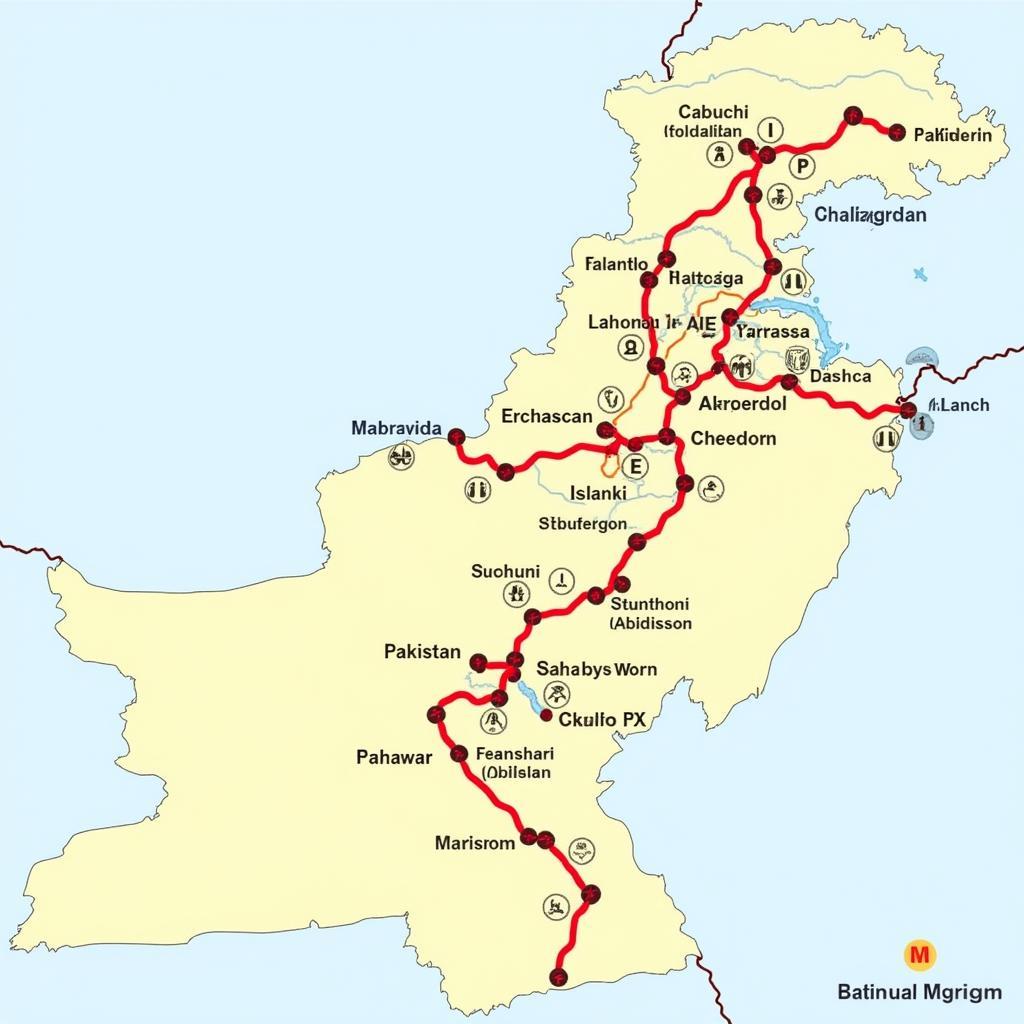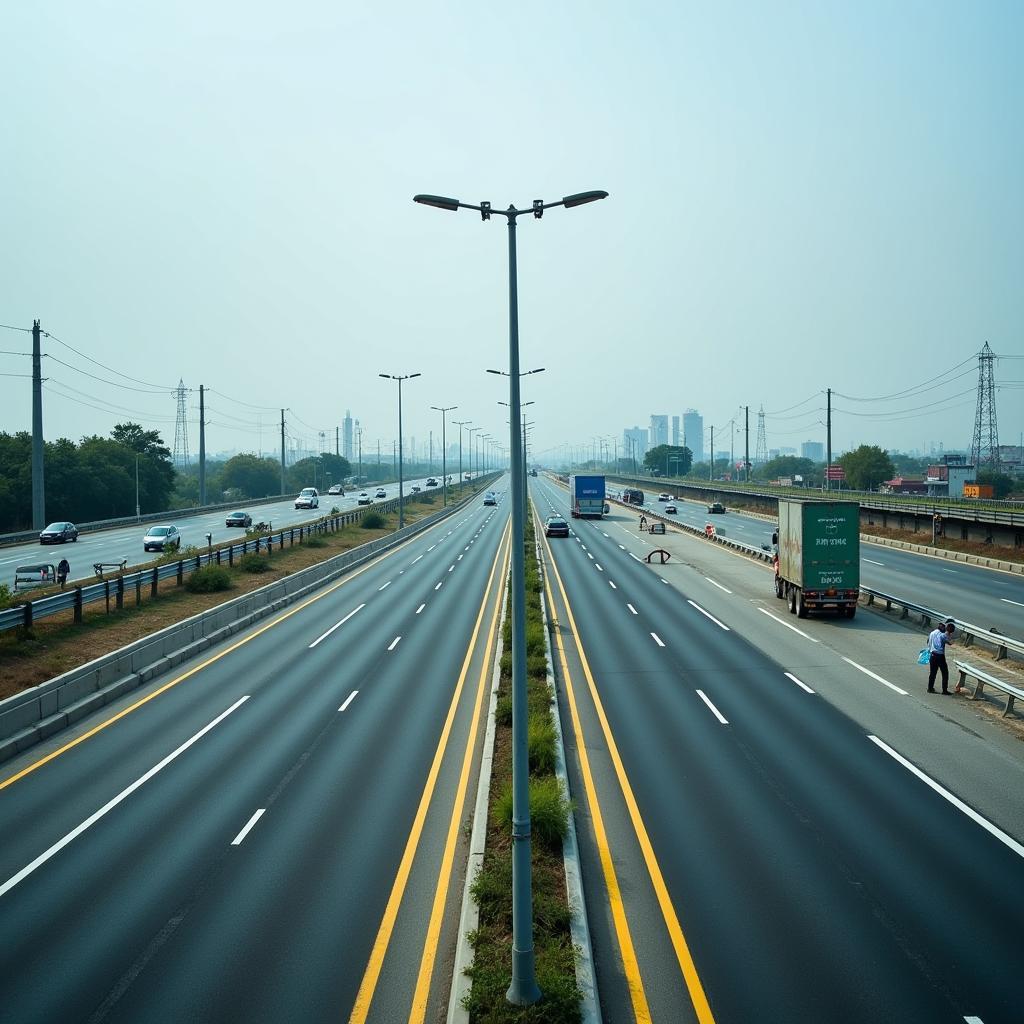Pakistan, with its rapidly growing economy and population, has recognized the crucial role of a robust infrastructure network in fostering development and connectivity. This has led to a significant investment in expanding the country’s motorway network, providing efficient and safe transportation routes for people and goods. But just how many total motorways are there in Pakistan?
Navigating Pakistan’s Motorway Landscape
While the exact number of completed motorways can fluctuate as new projects are inaugurated and existing ones are extended, Pakistan boasts an impressive and ever-growing network. These motorways are not just roads; they represent economic arteries, connecting major cities, ports, and industrial zones, thereby facilitating trade, tourism, and overall progress.
 Map of Motorways in Pakistan
Map of Motorways in Pakistan
Key Motorways and their Impact
Several motorways stand out for their significance in Pakistan’s transportation network:
1. M-2 Motorway (Islamabad-Lahore)
Often dubbed the lifeline of Pakistan, the M-2 was the first major motorway project completed in the country. It drastically reduced travel time between the two bustling cities of Islamabad and Lahore, significantly boosting economic activity.
2. M-9 Motorway (Hyderabad-Karachi)
Connecting the port city of Karachi to the rest of the country, the M-9 is vital for Pakistan’s trade and commerce. It serves as a crucial link for transporting goods to and from the Karachi port, the country’s busiest.
 Modern Motorway Infrastructure in Pakistan
Modern Motorway Infrastructure in Pakistan
3. M-1 Motorway (Peshawar-Islamabad)
The M-1 was instrumental in connecting the northwestern regions of Pakistan to the capital, Islamabad. It facilitated trade and tourism in the region, contributing to economic growth.
4. M-4 Motorway (Pindi Bhattian-Multan)
The M-4 further enhanced north-south connectivity, connecting central Punjab to the southern parts of the country. This facilitated agricultural produce transportation and boosted industrial activity in the region.
5. M-5 Motorway (Multan-Sukkur)
This section of the motorway network was crucial in linking southern Punjab with Sindh province. It improved access to agricultural lands and facilitated trade between the two provinces.
The Future of Motorways in Pakistan
Pakistan has ambitious plans to further expand its motorway network. New projects are underway, aiming to connect even more cities and regions, further stimulating economic growth and enhancing connectivity. This continuous development reflects Pakistan’s commitment to modernizing its infrastructure and harnessing its potential as a regional trade and transportation hub.
“The development of a robust motorway network is not just about building roads; it is about connecting people, opportunities, and dreams,” remarks Dr. Ayesha Khan, a prominent infrastructure development expert in Pakistan. “These motorways are shaping a brighter future for Pakistan, fostering economic growth, and improving the lives of millions.”
Conclusion
Pakistan’s commitment to developing its motorway network is evident in the numerous projects completed and underway. These motorways are not just roads but symbols of progress, connecting the country and driving it towards a brighter future. With each new kilometer of motorway built, Pakistan takes a significant stride towards achieving its economic and developmental aspirations.